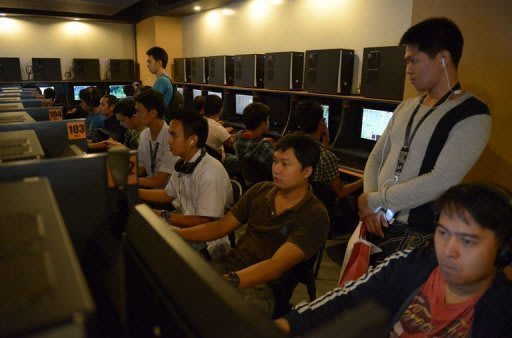Due to scant broadband frequencies, the government plans to harness unused Television channels - White Space (TVWS) or ''Super Wi-Fi'' - nationwide within 3 years to connect rural areas, schools and also for health, disaster migration, e-services and e-business.
Between them, Metro Manila and Cebu have 18 unused channels, with 46 percent of spectrum wasted.
Davao has 62 percent TV White space with 24 unused channels and the country's rural areas have a total of 24-31 unused channels, or 62-80 percent TV White Space.
ENJOY GOOD LIFE + INVESTMENT, CLICK HERE
''When you turn on your TV to these unused channels, the set displays ''white noise'' resembling snow, with a hissing sound,'' according to Louis Napoleon C. Casambre Executive Director, Information and Communications Technology Office of the Department of Science and Technology (DOST-ICTO) in a press briefing Friday.
''They carry no useful information and contribute nothing to the government coffers,'' he stressed.
White space only served as ''guard bands'' intentionally left unused to avoid interference between active channels but recent advances in TV technology removed the need for them.
Combined, all the white spaces in the country represent a bandwidth potential of up to 703 Megabits per second (Mbps) with a 378 percent growth potential from technology improvements, Casambre pointed out.
At present, only 47 percent of cities and municipalities have broadband access. Just 45 percent of high school and 2 percent of elementary schools have internet access. A mere 20 percent of households have Personal Computers and most families cannot afford broadband connection.
Already, the US Federal Communications Commission (FCC) approved the use of TVWS in 2010 for data communications.
ENJOY GOOD LIFE + INVESTMENT, CLICK HERE
''TVWS is an ideal wireless data delivery medium for the Philippines, with its long distance propagation characteristics and the ability of its signals to travel over water and through several concrete walls or thick foliage,'' explained the ICTO official.
Currently available TVWS equipment can deliver up to 6 Mbps of data throughput at a maximum range of 10 kilometers. They can have indoor antennas ideal for the uneven terrain in the countryside
TVWS will not compete with local telcos or cause interference. ''The telcos can participate in the trials,'' Casambre clarified. ''We can a give a telco a free TV frequency if they price their connectivity service lower.''
Furthermore, TVWS will cost less than 10 percent of the cost of existing technology and can be installed in schools with TV antennas, removing the need for cell sites or towers.
However, at this point, TVWS is still in a pilot stage in terms of technology and policy regime. ''We plan to maintain constant consultation with various stakeholders. We still have a lot to do, but we are excited about what TV White Spaces can do for the Philippines,'' he acknowledged.
ENJOY GOOD LIFE + INVESTMENT, CLICK HERE
Last year, TVWS was deployed in Quezon City's science community, in the offices of government agencies such as the National Telecommunications Commission (NTC), DOST, ICTO, ASTI, Philvocs, Pagasa and selected public schools.
This year, the government is deploying the technology in Visayas and Mindanao's public schools, tele-health and community centers. Specifically, it will be used in selected remote and unserved public schools as well as a fisheries project in Bohol.
Luzon follows next year. By 2015, TVWS should be deployed nationwide according to the DOST-ICTO roadmap.
Still, the government needs to draft the appropriate business model for the technology and resolve a lot of other issues, from spectrum availability, licensing, usage fee, interference to database ownership and enforcement.


No comments:
Post a Comment